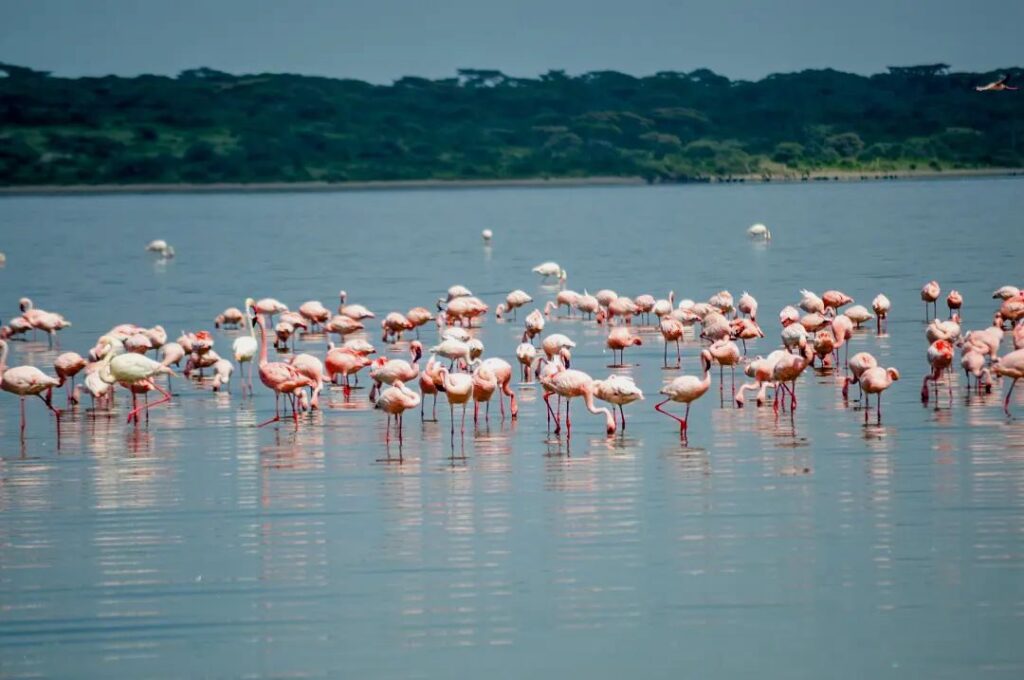ngorongoro Crater
is also referred to as ‘the Garden of Eden
Overview
about the park
Largest unfilled, intact and inactive volcano in the world
The Ngorongoro Crater in northern Tanzania is a premier geological and ecological landmark, formed from a collapsed volcano around 2-3 million years ago. This expansive volcanic caldera, approximately 19 kilometers in diameter and 610 meters deep, covers 260 square kilometers. It is part of the UNESCO-listed Ngorongoro Conservation Area, notable for its rich biodiversity and cultural heritage.
The crater’s diverse habitats—grasslands, swamps, forests, and Lake Magadi—support a high concentration of wildlife, including the “Big Five” (lions, elephants, buffalo, rhinos, and leopards). It is one of the few places in Africa to see the critically endangered black rhino in the wild. The Maasai people, who have lived in the region for centuries, contribute to the area’s cultural significance.
While the crater is a top safari destination, it faces challenges such as human-wildlife conflict, poaching, and tourism impacts. Ongoing conservation efforts aim to preserve this unique ecosystem for future generations. The Ngorongoro Crater offers a blend of stunning natural beauty, ecological richness, and cultural depth, making it a must-visit site.
Spectacular Wildlife Viewing:
Biodiversity: Home to over 25,000 large animals, including the "Big Five" (lion, elephant, buffalo, rhino, and leopard). Rare Species: One of the few places where you can see the critically endangered black rhino in the wild.
Stunning Landscapes:
Scenic Beauty: The crater’s diverse habitats, from lush grasslands to serene lakes, offer breathtaking views and photographic opportunities. Unique Geology: As the world's largest inactive, intact volcanic caldera, it provides a fascinating geological landscape.
Unique Ecosystem:
Part of the larger Tarangire-Manyara Ecosystem, the park covers around 35,000 square kilometers. Its varied vegetation includes riverine woodlands, Acacia tortilis parkland, wetlands, seasonal flood plains, and more, supporting a wide range of flora and fauna.
Abundant Birdlife:
With over 550 bird species, Tarangire is a birdwatcher's paradise. The open Acacia woodlands, Silale Swamp wetlands, and Tarangire River flood plains provide excellent opportunities for bird spotting.
Cultural Experience:
Maasai Heritage: Experience the traditional lifestyle of the Maasai people, who have lived in harmony with the wildlife for centuries. Historical Significance: The area is rich in archaeological history, including sites linked to early human evolution.
Accessibility and Amenities:
Accommodations: A range of lodges and campsites cater to different budgets and preferences, enhancing the overall experience.
Other Top Safari Destinations
Discover your dream journey with us! Explore our curated example trips for inspiration, then connect with us to craft your own personalized adventure.







